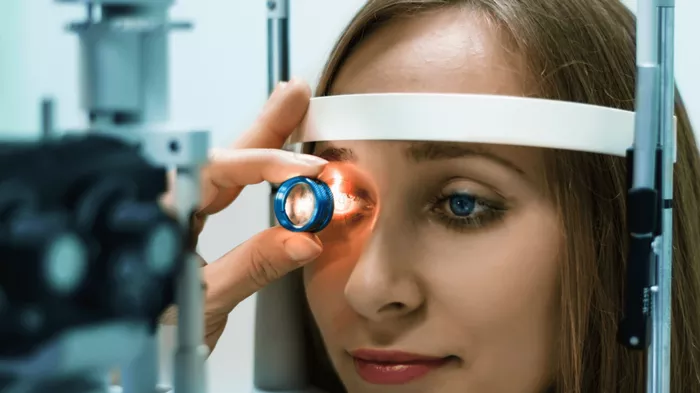Lazy eye, or amblyopia, is a common vision disorder that affects approximately 2–3% of the population. It occurs when one eye develops weaker vision than the other due to poor coordination between the eye and brain. While traditional treatments like patching or vision therapy are effective for many, surgery is considered for specific cases. But is lazy eye surgery worth it?
This article evaluates the benefits, risks, and alternatives of lazy eye surgery to help you make an informed decision.
Understanding Lazy Eye and Its Causes
Lazy eye develops when the brain suppresses input from one eye, leading to vision impairment. The condition typically arises during early childhood but can persist into adulthood if untreated.
Common Causes of Lazy Eye
Strabismus: Misalignment of the eyes, causing the weaker eye to be ignored by the brain.
Refractive Errors: Unequal vision in the eyes due to issues like nearsightedness, farsightedness, or astigmatism.
Deprivation Amblyopia: Caused by conditions like cataracts that block vision during critical developmental periods.
Lazy eye can lead to depth perception issues and difficulty focusing, significantly impacting daily life.
What Is Lazy Eye Surgery?
Lazy eye surgery aims to correct strabismus, the misalignment of the eyes. It involves adjusting the eye muscles to align both eyes, improving their appearance and functionality. The surgery itself does not directly treat amblyopia (the vision impairment) but addresses its root cause in cases of strabismus-related lazy eye.
Benefits of Lazy Eye Surgery
1. Improved Eye Alignment
The most immediate benefit of surgery is the cosmetic correction of misaligned eyes. For many, this boosts self-confidence and reduces social anxiety.
2. Enhanced Binocular Vision
In some cases, aligning the eyes can improve binocular vision, enabling better depth perception and coordination.
3. Long-Term Stability
Modern surgical techniques often result in long-lasting alignment, minimizing the need for future procedures.
4. Suitable for Adults and Children
While early intervention is ideal, adults can also benefit from lazy eye surgery, particularly for cosmetic improvements or functional alignment.
Risks and Considerations
Like any surgical procedure, lazy eye surgery carries potential risks and limitations.
1. Surgical Risks
Infection: Rare but possible.
Overcorrection or Undercorrection: The eye may still appear misaligned after surgery, requiring additional procedures.
Anesthesia Risks: Particularly for children, undergoing general anesthesia can pose minor risks.
2. Limited Vision Improvement
Lazy eye surgery does not directly restore vision in the affected eye. Vision therapy or other treatments may still be necessary post-surgery.
3. Recurrence of Misalignment
While modern techniques are effective, some patients may experience a recurrence of misalignment over time.
Cost and Accessibility
The cost of lazy eye surgery varies based on location, surgeon expertise, and healthcare coverage. In the U.S., the procedure may range from $3,000 to $6,000 per eye, depending on the complexity. Insurance may cover part or all of the costs if deemed medically necessary.
For those outside the U.S., costs in countries like Turkey or India may be significantly lower, making medical tourism a viable option for some.
Alternatives to Lazy Eye Surgery
Surgery is not the only option for managing lazy eye. Non-invasive treatments are often recommended, especially for children:
1. Patching
Covering the stronger eye forces the brain to use the weaker eye, strengthening its vision over time.
2. Vision Therapy
Specialized exercises and treatments improve eye coordination and brain-eye communication.
3. Corrective Eyewear
Glasses or contact lenses address refractive errors that contribute to amblyopia.
4. Atropine Drops
These drops temporarily blur vision in the stronger eye, encouraging use of the weaker eye without the need for a patch.
5. Botox Injections
For minor cases of strabismus, Botox injections can temporarily weaken specific eye muscles, improving alignment without surgery.
Is Lazy Eye Surgery Worth It?
The decision to pursue lazy eye surgery depends on individual circumstances.
When Surgery Is Worth Considering:
Severe Strabismus: When misalignment causes functional or social challenges, surgery can be transformative.
Failed Non-Surgical Treatments: If other treatments have not resolved the issue, surgery may be the next logical step.
Cosmetic Concerns: For those troubled by the appearance of misaligned eyes, surgery can provide significant psychological relief.
When Surgery May Not Be Necessary:
Mild Misalignment: Non-surgical options are often sufficient for minor cases.
No Functional or Cosmetic Impact: If lazy eye does not significantly impact quality of life, surgery may not be required.
Preparing for Surgery
If you decide on surgery, here are some steps to prepare:
Consult an Ophthalmologist: Discuss your specific condition and determine if surgery is appropriate.
Understand the Procedure: Ask your surgeon about the surgical process, recovery time, and potential outcomes.
Plan Post-Surgery Care: Recovery typically involves a few weeks of rest, with follow-up visits to monitor progress.
Recovery and Outcomes
Recovery from lazy eye surgery usually takes 1–2 weeks. During this time, patients may experience:
- Redness or swelling in the eyes.
- Temporary blurred vision or double vision.
- Mild discomfort managed with over-the-counter pain relief.
Most patients return to normal activities within a week, though full healing may take several months.
Conclusion
Lazy eye surgery can be a valuable option for individuals with significant eye misalignment or persistent issues despite non-surgical treatments. While it does not directly improve vision in the weaker eye, the cosmetic and functional benefits often outweigh the risks for suitable candidates.
Before deciding, consult with an experienced ophthalmologist to explore all options and determine whether surgery aligns with your personal and medical needs. For many, the improvement in alignment, confidence, and quality of life makes lazy eye surgery a worthwhile investment.
You Might Be Interested In:

